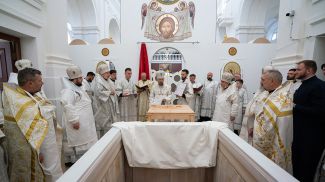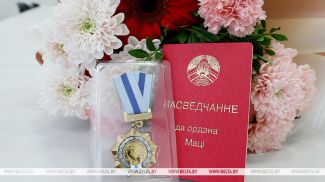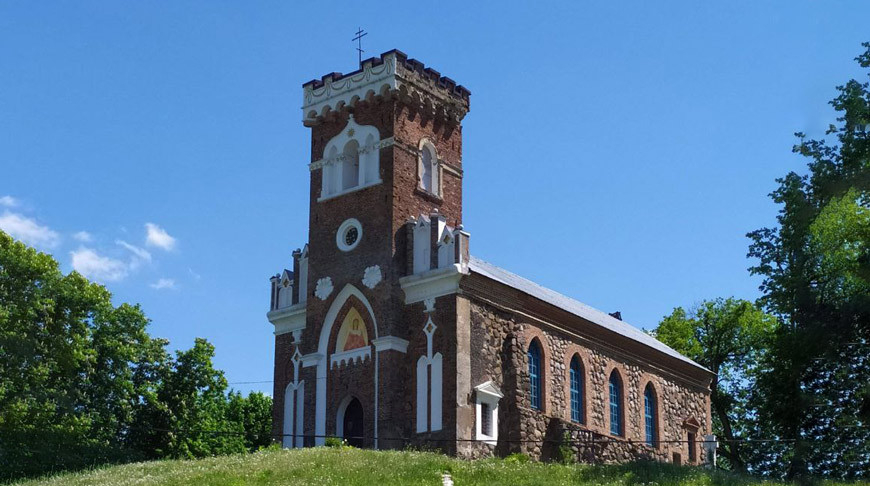
Many places in Belarus are associated with the name of the famous Belarusian poet Adam Mickiewicz. Most often you can hear about Zaosye, Tuganovichi, Boltiniki and Novogrudok. But there are less well-known places that are worth seeing.
Former glory of Voroncha
The first point of the route is the agro-town of Voroncha, Korelichi District. It was first mentioned in the 17th century, when the place was owned by Berestye Voivode Stefan Kurcz. He founded a castle which was destroyed during the war with Sweden. At the end of the 18th century, Józef Niesiołowski, the new owner of Voroncha, built a new residence and a stone Roman Catholic church. In the 19th century, the estate changed many hands. It was owned by the Niesiołowskis, Kobylinskys, Merzheevskys, Lubanskys.
The only building that has survived in Voroncha since the 18th century is a brewery. We can appreciate the beauty of the estate only by looking at photographs and engravings.
A huge one-story wooden house had more than twenty rooms. The largest one, the dining room, featured several fireplaces, satin sofas, massive carved tables and chairs. Outside, there were lush flower beds, neat lawns, terraces and colonnades entwined with wild grapevines. The estate was the center of social life of Novogrudok Voivodeship. It hosted the nobility meetings in the run-up to Sejm sessions. Back in the day the image of the manor house was once used on postcards.
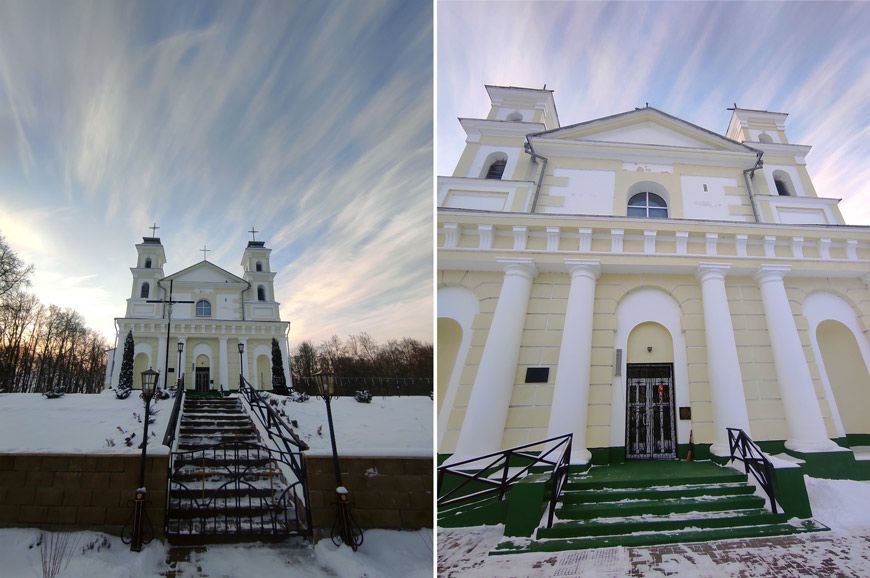
Unfortunately, the estate was burned down during the Great Patriotic War to be never restored.
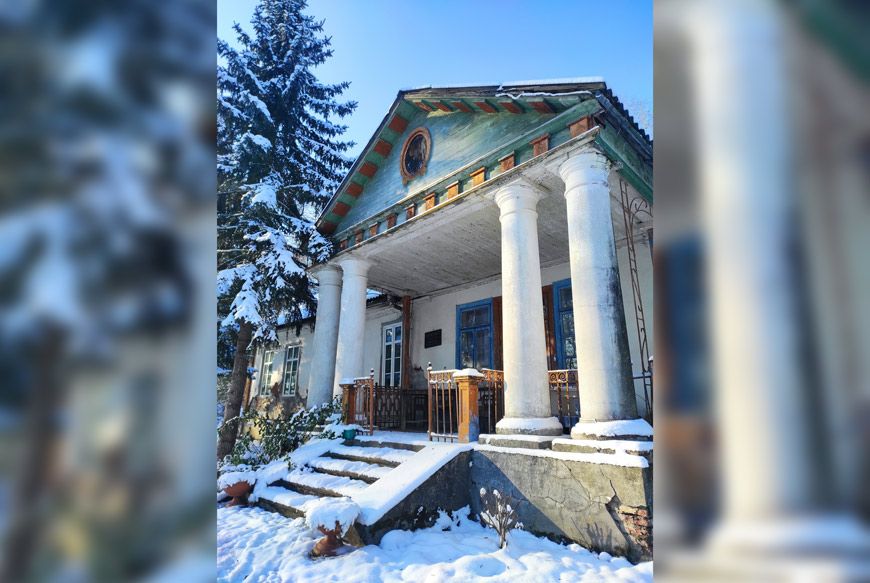
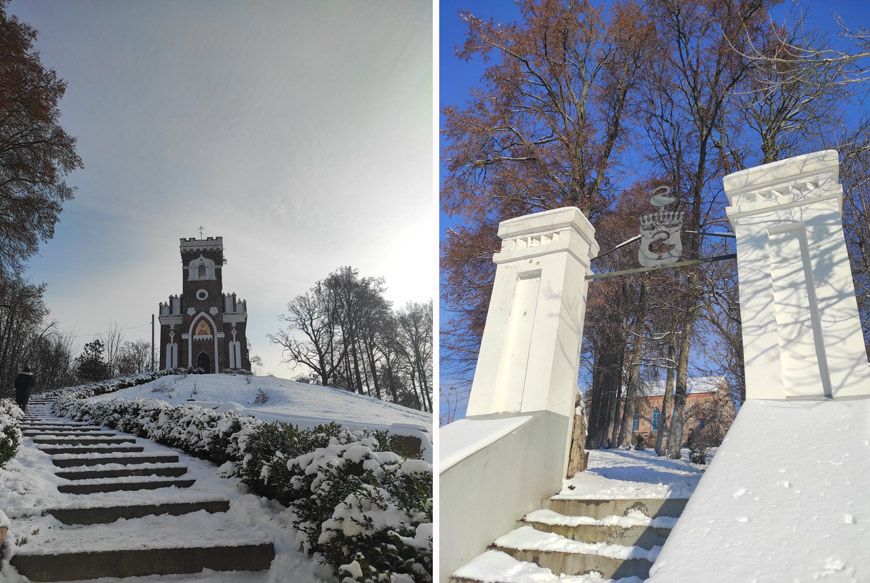
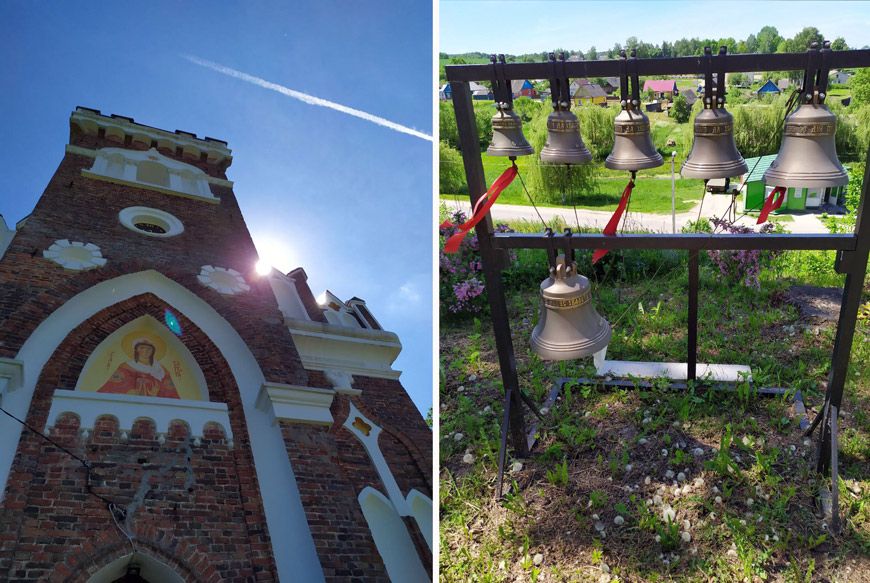
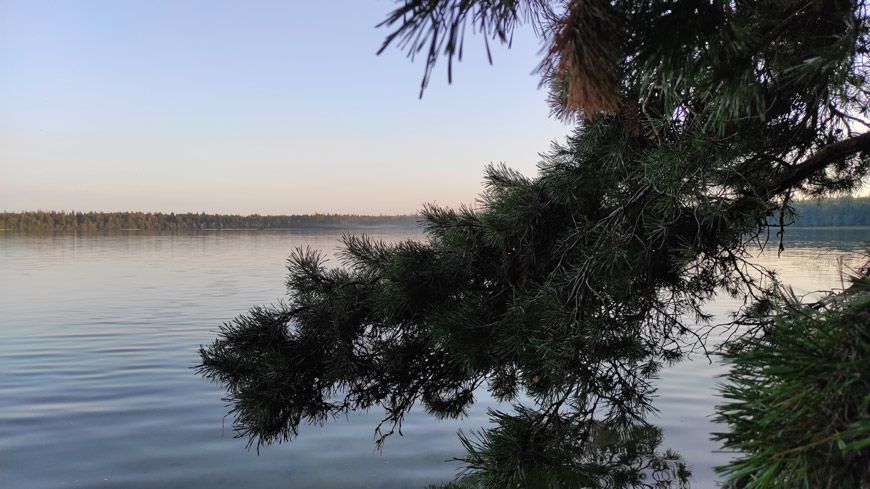
Former glory of Voroncha
The first point of the route is the agro-town of Voroncha, Korelichi District. It was first mentioned in the 17th century, when the place was owned by Berestye Voivode Stefan Kurcz. He founded a castle which was destroyed during the war with Sweden. At the end of the 18th century, Józef Niesiołowski, the new owner of Voroncha, built a new residence and a stone Roman Catholic church. In the 19th century, the estate changed many hands. It was owned by the Niesiołowskis, Kobylinskys, Merzheevskys, Lubanskys.
The only building that has survived in Voroncha since the 18th century is a brewery. We can appreciate the beauty of the estate only by looking at photographs and engravings.
A huge one-story wooden house had more than twenty rooms. The largest one, the dining room, featured several fireplaces, satin sofas, massive carved tables and chairs. Outside, there were lush flower beds, neat lawns, terraces and colonnades entwined with wild grapevines. The estate was the center of social life of Novogrudok Voivodeship. It hosted the nobility meetings in the run-up to Sejm sessions. Back in the day the image of the manor house was once used on postcards.

Adam Mickiewicz visited the estate many times. He mentioned the estate in his poem "Pan Tadeusz": "What would the old wojewoda Niesiolowski say, a man who still has the finest kennel in the world, and maintains in lordly wise two hundred hunters, and who has a hundred waggon-loads of nets in his castle of Voroncha, and yet for so many years has been abiding like a monk within his house?"
Unfortunately, the estate was burned down during the Great Patriotic War to be never restored.
In Vorocha you can also see the Church of St. Anne built in the late 18th century in the Late Classicism style. The construction was funded by Józef Niesiołowski's uncle, Kazimierz Niesiołowski. The latter, by the way, was indirectly related to Adam Mickiewicz. Being a very harsh person, Kazimierz offended peasants and the petty gentry who finally brought him to court and won the case thanks to the lawyer Mikolaj Mickiewicz, the poet's father.
Photographer Jan Bułhak and folklorist and ethnographer Jan Czeczot were baptized in the church.
During the Great Patriotic War, the church caught fire. After the war, there was an attempt to blow it up, but only the middle of the church was destroyed, while the walls held up. The church remained like that for quite a long time, and only in the early 1990s it was returned to believers. The church has been restored and is now operational.

Medieval castle in Raitsa
Next we head to the village of Raitsa in Korelichi District. It was first mentioned in written sources at the beginning of the 16th century as the property of the Vereshchakas. It changed hands and was owned by the Naumovichs and Gashtolds, the Rayetskis, the Vereshchakas again and the Puttkamers. Józef Vereshchaka, who owned the village in the 19th century, was the brother of Adam Mickiewicz's sweetheart Maryla. Thus, the poet was a frequent guest at the estate.
It was built in the early 19th century and looked very typical for its time. Before the Great Patriotic War, the estate was donated to the Congregation of the Sisters of the Catholic Apostolate (Pallottine Sisters). After the war, it housed a hospital and a polyclinic, then a rural clinic with a pharmacy. Now the estate is privately owned.

Another draw of the village is a church. It is spotted from far away as it stands at the highest point of the village. At first it may seem like a small medieval castle, but then you realize that it is not a place for castles. And when you get closer, you notice the cross, frescoes and bells.
The Church of St. Barbara was built by Franciszek Rajecki in the early 19th century as a family tomb. According to legend, the founder’s son traveled a lot and told his father about the trips. Among other things, he admired the majesty and beauty of the temple on St. Helena and lamented he had never seen anything similar in his homeland. Inspired by these stories, Franciszek Rajecki decided to build a family tomb in Raitsa, using the image of the St. Helena temple as an example. Local villagers did the construction. They dragged huge boulders on linen cloths and made walls of them. They installed a clock on the tower, the sound of which could be heard for kilometers around. The church also featured an sculpture of the Mother of God, stained glass, and frescoes. The church was consecrated in honor of St. Barbara.
In the second half of the 19 century, after the uprising, the church was handed over to the Orthodox church and was consecrated as the Church of the Transfiguration of the Saviour.

During the Great Patriotic War the altar wall of the church was damaged. The frescoes, stained glass windows, wooden carvings and moldings were all destroyed in a fire. By the late 1950s, the temple was almost completely ruined. Restoration work did not begin until the beginning of the 21st century.
Legends of Lake Svityaz
Celebrated by Adam Mickiewicz, steeped in legends and shrouded in mystery, Lake Svityaz leaves an indelible mark in the heart and soul.
Legends have it that once there was a town of Svityaz. One day, when its ruler and his retinue went to Novogrudok to help Duke Mindouh, Svityaz was attacked by an army. The old people, women and children did not want to surrender to the enemy and burned the town down. Suddenly, the ground split apart, the city fell down and a lake appeared in its place. The inhabitants turned into white flowers, and the duke’s daughter turned into a mermaid. She was given the name Svityazianka and became the keeper of the lake.

No rivers flow into Lake Svityaz. Only the Svorotva River flows out of it. But the lake’s water level remains constant despite rains, melting snow, or droughts. A legend explains why it does. The legend says that a local noble was obsessed about the puzzle as well. He ordered peasants to dig two canals away from the lake in order to drain it. But water rushed so fast that it flooded a lot of homes. Svityaz the maiden appeared before the noble when he was asleep. She told him in a threatening tone that if he did not stop fooling around, then the lake would overflow the banks and everything around it would be flooded. When he woke up, the unlucky explorer ordered the canals demolished.
While it is difficult to trust legends and verify their authenticity, here is a fact for you. Archeologists say that trails of Baltic tribes used to go along the bottom of the lake in the past. A fragment of a paved road was found at the bottom of the lake in the 1970s.
But just like that noble the scientists cannot explain why the water level in the lake always remains the same. The lake also contains relict shellfish that can be found only in lakes in France, Belgium, and Germany. Another mysterious resident of Lake Svityaz is the seaweed tetradinium javanicum that is endemic only to Java Island. But that’s not it. The lake is also home to five water plants in Belarus’ Red Book of Endangered Species. The occurrence is unique for Belarus. One species is exceptionally rare and relict: littorella uniflora. It grows only in Lake Svityaz.
So, Lake Svityaz is that kind of lake. When one sees its transparent waters, yellow sand, sky-high pine trees, the beauty of sunrises and sunsets, one feels the desire to come back to the place again and again at any time of the year in order to spend some time with a book by Adam Mickiewicz, listen to songs of mermaids and the tolling of bells of the sunken city.
By Kseniya Dmitriyeva. Photos courtesy of the author.
While it is difficult to trust legends and verify their authenticity, here is a fact for you. Archeologists say that trails of Baltic tribes used to go along the bottom of the lake in the past. A fragment of a paved road was found at the bottom of the lake in the 1970s.

But just like that noble the scientists cannot explain why the water level in the lake always remains the same. The lake also contains relict shellfish that can be found only in lakes in France, Belgium, and Germany. Another mysterious resident of Lake Svityaz is the seaweed tetradinium javanicum that is endemic only to Java Island. But that’s not it. The lake is also home to five water plants in Belarus’ Red Book of Endangered Species. The occurrence is unique for Belarus. One species is exceptionally rare and relict: littorella uniflora. It grows only in Lake Svityaz.
So, Lake Svityaz is that kind of lake. When one sees its transparent waters, yellow sand, sky-high pine trees, the beauty of sunrises and sunsets, one feels the desire to come back to the place again and again at any time of the year in order to spend some time with a book by Adam Mickiewicz, listen to songs of mermaids and the tolling of bells of the sunken city.
By Kseniya Dmitriyeva. Photos courtesy of the author.






